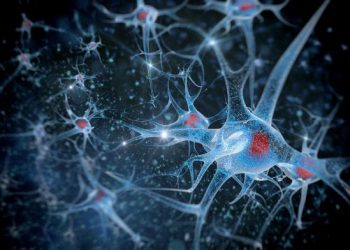In chronic lymphocytic leukemia (CLL), the bone marrow makes too many B lymphocytes. These are cells that help fight infection.
Over time, these cancerous blood cells crowd out healthy blood cells and cause enlarged lymph nodes, liver and spleen. This makes it hard for the blood to carry oxygen and nutrients.
Symptoms
A blood test shows that you have too many lymphocytes (a type of white cell) in your body. Your doctor may diagnose you with chronic lymphocytic leukemia (CLL) or small lymphocytic leukemia (SLL).
The cancerous lymphocytes build up in your bone marrow, where they crowd out healthy cells that normally guard against infection and carry oxygen to all parts of the body. Your doctor may refer you to a specialist in blood and bone marrow diseases, called a hematologist.
Most people with CLL don’t have any symptoms at first. Those that do usually get worse slowly over time. Your symptoms might include a feeling of tiredness, not getting enough sleep or being breathless even when resting. You might also have a fever, weight loss and enlarged lymph nodes (swollen glands in your neck, armpits, groin and under the chin).
Over time, the number of abnormal lymphocytes increases in your body. Because they’re so plentiful, they can’t produce enough healthy red blood cells to supply the normal amount of oxygen throughout the body. This can lead to a low red blood cell count (anemia). You may have fewer neutrophils, which help fight infection, and fewer platelets, which are responsible for blood clotting. This can cause easy bruising and bleeding that doesn’t seem to have a good reason.
Your spleen and liver may grow larger and may start to function poorly. The spleen and liver are both organs that store blood. They’re important for blood clotting and keeping the body’s nutrients and fluids in balance.
Some types of chemotherapy drugs can treat chronic lymphocytic leukemia by killing cancer cells or stopping them from dividing. Your doctor may prescribe single-drug or combination chemotherapy. These medications are given by mouth or injected into a vein, muscle or chest wall (intravenous infusion).
Some people feel intimidated by systems that reduce their health problem to a series of numbers and letters. Your providers understand that and try to explain things in ways you can understand.
Diagnosis
CLL starts in the blood and bone marrow (the spongy tissue inside bones where blood cells are made). It affects lymphocytes, a type of white blood cell that helps fight infection. The disease can also spread to other parts of the body, including the spleen and liver. It’s most common in people who are over age 55. It’s rare in children.
Like other types of leukemia, chronic lymphocytic leukemia develops when normal blood stem cells become cancerous and multiply out of control. Doctors don’t know what starts this process, but they do know that something changes the genetic code of lymphocytes so that they make faulty cells that don’t work like they should. These abnormal lymphocytes can crowd out healthy blood cells and interfere with the production of new ones.
When you have CLL, it’s usually diagnosed after a blood test done for another reason shows that your lymphocyte count is high. Your doctor will want to do more tests to confirm the diagnosis and find out whether the leukemia has spread. These tests include a complete blood count (CBC) with a differential, a blood chemistry panel that measures substances such as electrolytes and enzymes, and a flow cytometry test to check for the presence of leukemia cells.
Your doctor will also look at your health history to help determine the stage of your chronic lymphocytic leukemia. Your stage helps your doctor decide if you need treatment right away or not. The stages use numbers and letters to describe how much the leukemia has grown and if it is likely to get worse quickly.
The first step is for your doctor to evaluate your symptoms and do a physical exam. He or she may refer you to a specialist in blood and bone marrow diseases, a hematologist. For some patients, a bone marrow transplant may be an option. But this is less often used now that more effective treatments are available. During a bone marrow transplant, a donated marrow sample is infused into your body to replace the diseased lymphocytes. It can also reduce the chance of the leukemia returning.
Treatment
CLL occurs in the blood and bone marrow, the spongy tissue inside the bones where blood cells are made. The cause isn’t known, but something changes the genetic code inside the cells that make white blood cells. These cells normally help fight infection, but the mutated cells multiply and grow out of control, crowding out healthy blood cells and blocking new blood cells from being made. This buildup can lead to swelling of the lymph nodes, spleen, liver, and other organs. It can also cause a yellow pigment of the skin (jaundice) and affect your heart, eyes, and other organs.
Most people with chronic lymphocytic leukemia don’t have any symptoms at first and may not need treatment right away. If you have symptoms, the doctor will order blood tests to find out how serious your condition is. A test called fluorescence in situ hybridization (FISH) looks at the chromosomes of your cancerous lymphocytes to see if there are any mutations. It can help the doctors determine your stage of CLL, which is a key factor in deciding what kind of treatment you need.
The doctor will also use other tests to check your overall health and see if the lymphocytic leukemia is spreading. The stage of your cancer tells the doctor how quickly the leukemia is growing and whether it is likely to spread to other parts of your body. Your doctor will use this information to plan your treatment.
There are several treatment options for people with chronic lymphocytic leukemia, including watchful waiting, chemotherapy, targeted therapy, and stem cell transplant. Your doctor will choose the treatment that’s best for you, depending on your stage of cancer, signs and symptoms, health, and preferences.
The goal of treatment is to reduce or eliminate your symptoms and put the cancer into remission, or a period without signs or symptoms. You may go through cycles of remission and recurrence, or have the disease stay in remission for years. Treatment can be uncomfortable and cause side effects, but it can help you feel better and live longer.
Prognosis
Many people with chronic lymphocytic leukemia live a long time, especially when the cancer is in early stages and doesn’t cause bothersome symptoms. This is partly because the disease grows so slowly and the treatments keep the signs and symptoms at bay for years. Some people may never need treatment at all.
But when the cancer cells grow out of control, they can start to crowd out healthy blood cells and platelets. Over time, this can lead to problems such as a low number of blood platelets (thrombocytopenia) and anemia. It can also cause infections in the lungs (pneumonia), spleen (splenomegaly) or other organs.
Doctors have developed systems that help them predict how well a person with chronic lymphocytic leukemia will do. They use the Rai staging system to classify people according to how advanced the disease is. The system looks at the symptoms, how well the blood is working and how swollen the liver and spleen are. It also takes into account the patient’s age and overall health.
Stage I: You have swollen lymph nodes in one or more places, but the rest of your blood is normal and you don’t have a low count of blood platelets (thrombocytopenia).
If your symptoms are mild or don’t get worse, you might not need treatment right away. Your doctor will follow you closely with regular blood tests and physical exams. He or she might give you medications to control your symptoms, such as steroids.
You might have a bone marrow transplant if the drugs you’re taking aren’t helping or the cancer has grown quickly. This isn’t common for people with CLL, but it might be an option if the disease is causing symptoms and other treatments aren’t helping. Your doctor will decide if you need a transplant after looking at your symptoms, the size of your tumors and how swollen your liver and spleen are. He or she might suggest other types of treatment before considering a transplant. You might need to take antibiotics to avoid infections while waiting for a new treatment to be approved.









